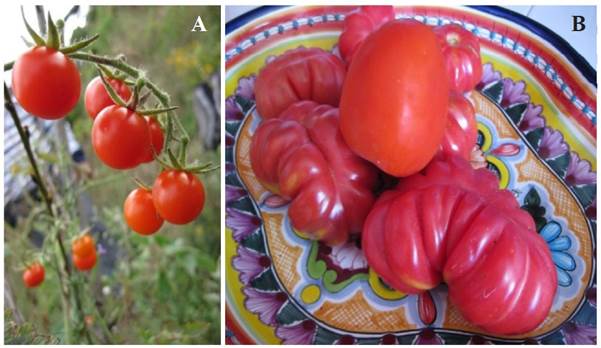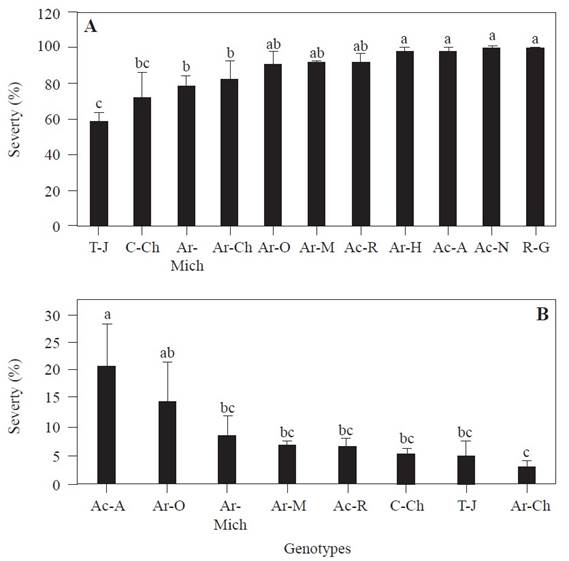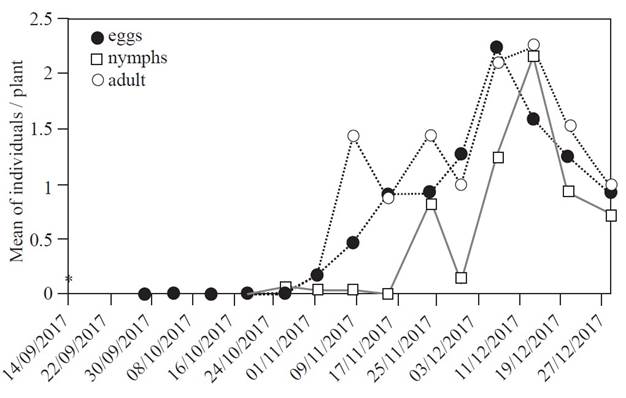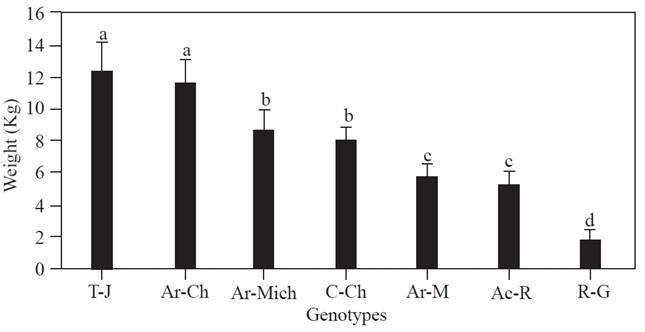The productive agricultural paradigm
Unlike the wide diversity of varieties adapted to the environment, the modern agricultural paradigm has produced the idea of putting the environment at the service of the genotype (Sarandón, 2014). Thus, worldwide food production is based on reduced number of varieties, highly productive yet eventually vulnerable to pests, diseases and other environmental factors such as water stress or frosts. As a response, the modern agricultural production model uses high amounts of energy in the form of organo-synthetic pesticides (Altieri and Nicholls, 2010). Pest control in Mexico and in many areas of the world is characterized by being more ‘calendarized’ than predictive, resulting in programmed pesticide applications, regardless of the type of pest, disease or weed. In the end, it becomes a vicious circle, highly dependent on pesticide agroecosystems: the environment at the service of the genotype. Problems caused by the irrational use of pesticides have been widely documented (Devine et al., 2008), but perhaps the most important one is the damage caused to human health (Seefoó, 2005).
When national emergencies occur, like the COVID-19 pandemic that has affected us all since 2020, the limitations of the modern agricultural model become more evident. As confirmed, the global economy has become seriously slumped, and the effect on agriculture as a primary economic activity was no exception (CEPAL, 2020; World Bank, 2020). The high dependency on agrochemicals, of which have been imported, as well as on many other inputs due to the deterioration of the supply chains, has affected food production and distribution (CEPAL, 2020). Should the pandemic be extended, with affected supply chains and the weakening of production units, the yield of monoculture varieties would be highly affected by the incidence of pests and diseases. In addition, the effect of climate change would enhance its negative impact on modern agricultural systems (Salcedo and Guzmán, 2014). Two of the most widely accepted strategies to reduce the use of pesticides in agriculture are the ecological management of pathosystems and integrated pest management with plant resistance as the main strategy (Kogan, 1990; Robinson, 1996). The main source of resistance to pests and diseases is in the ‘endemic parents of cultivated plants’ and in ‘creole varieties’ (Labate et al., 2007), both hereinafter referred to as ‘native varieties.’
The aim of this text is to analyze, discuss and reflect upon the importance that native varieties of cultivated plants have on food production, and the role they play in situations such as the pandemic caused by the virus SARS-CoV-2. The example used is the tomato Solanum lycopersicum for three main reasons: along with maize, it is one of the crops with the most genetic manipulation; it has several plant health problems (Blancard, 2012; King and Saunders, 1984; Pérez et al., 1987); and it is deeply culturally ingrained in Mexico.
Native tomato varieties and plant health
The cultivated tomato is one of the crop with the greatest phytosanitary problems, with more than 13 pest species and diseases that include practically the entire spectrum of pathogens. Several of these are transmitted by insects (King and Saunders, 1984; Blancard, 2012). Although it is not the center of origin, it is widely agreed that the tomato was first domesticated in Mexico (Labate et al., 2007), and it has a wide diversity of native varieties (Lobato-Ortiz et al., 2012). These may play an important part in the healthy and sustainable production of tomato, particularly in the natural regulation of pests and diseases.
The closest endemic relative of the tomato is S. lycopersicum var. cerasiforme, which is an important source of resistance to pests such as the silverleaf whitefly Bemisia tabaci (Hem: Aleyrodidae) and the red spider mite Tetranychus spp. (Acari: Tetranychidae) (Pérez et al., 1987; Sánchez-Peña et al., 2006). In western Mexico, this relative of the tomato is locally known as ‘tinguaraque’ (Figure 1A). Explorations in this region documented a wide diversity of morphotypes, with a reduced presence of phytophagous insects (Alvarez-Hernández, 2009). Under the conditions of the Chapala swamp, in Michoacán, Mexico, regarding a commercial variety, the tinguaraque displayed tolerance to the silverleaf whitefly B. tabaci, the potato psyllid Bactericera cockerelli (Hem: Triozydae) and vegetable leaf miners Liriomyza spp. (Dip: Agromyzidae) (Cortez-Madrigal, 2010), as well as to the pathogens Phytophthora sp. and Rhizoctonia sp. (Arellano et al., 2013).
Mexican farmers have produced a wide variety of creole varieties, adapted to local environments (Figure 1B) (Vera-Sánchez et al., 2016). Thus, Nord et al., (2020) recorded a lower incidence of pests in wild, creole and commercial varieties, in that order, indicating the reverse relationship between pest resistance and the degree of genetic manipulation (Rozenthal and Dirzo, 1997).

Archive photos by the author.
Figure 1 Native Mexican varieties of tomato (Solanum lycopersicum). A. Wild cherry-type, called tinguaraque. B. Kidney-type variety beside a commercial one (smooth fruit on top).
Apart from insect-pests, damages caused by fungi and nematodes are another problem that requires solving. With the prohibition of methyl bromide as a biocide, frequently used to sanitize soils in seedbeds and fields, the native tomato varieties are an alternative (Labate et al., 2007). For example, the severity of foliar fungal diseases was 20 to 40% less, respectively, that the one observed in a commercial variety (Figure 2A). The severity caused by the nematode Meloidogyne sp. was 5% in endemic varieties and only 3% in creole varieties (Figure 2B). The phytosanitary response of the native varieties was related to the production, generally higher than in the commercial variety.
Native varieties in production systems
In Mexico, the agricultural production of related crops between diverse plants, wild and/or raised, (i.e. milpa, or diversified maize field) is common among small-scale farmers (Ayala et al., 2019). These agroecosystems can boost beneficial biotrophic relations, such as the biological control of pests (Altieri and Nicholls, 2010). The use of creole and endemic tomato varieties, in relation to maize and tropical milkweed (Asclepias curassavica), has displayed a low incidence and diversity of pests and diseases, thus the use of organo-synthetic pesticides has been avoided. Vectors of pathogens, such as Bactericera cockerelli, delayed its appearance by up to 45 days (Figure 3), and with it, the impact of the “permanent” tomato disease caused by Candidatus Liberibacter solanacearum. The parasitism of nymphs by Tamarixia triozae (Hymenoptera: Eulophidae) was >80%, and for the first time, epidemics of entomophthorales fungi were registered in adult B. cockerelli (H. Cortez. 2020. Data not published).

Figure 2 Severity of foliar fungal diseases (A) and those cause by the nematode Meloidogyne sp. (B) in native tomato varieties and one commercial variety (R-G). T-J and C-Ch are wild varieties, and the rest are creole. Bars with at least one letter in common are not statistically different (Tukey, 0.05).
Studies in Mexico proved the potential of native varieties as grafts for non-grafted commercial varieties in the reduction of the incidence of pests (Nord et al., 2020). Grafted plants produced up to six times more than the commercial, non-grafted variety (12.38 kg vs 1.8 kg) (Figure 4). This was achieved with a reduced use of organo-synthetic inputs. This does not coincide with the suggested idea of an inverse correlation between production and resistance to pests and diseases (Rozenthal and Dirzo, 1997). It is crucial to strengthen lines of investigation that help produce knowledge on production models of low environmental impact that have proved their resilience against modern production methods.

Figure 3 Incidence of Bactericera cockerelli on one of the most susceptible creole genotypes (Arriñonado Oaxaca) under an agroenvironmental management scheme. Jiquilpan, Mich. 2017. Tomato transplant *.
Native varieties in the face of COVID-19
In global crises such as long-lasting pandemics, food production may be seriously affected. This may be due to factors that include food hoarding, unemployment, rising prices and finally, the escalation of extreme poverty (CEPAL, 2020). The high reliance on imported industrialized inputs, e.g., pesticides and fertilizers, is a risk factor for extensive and modern agri-food systems in the light of pandemic phenomena. Native varieties are not only a provider of genes for the improvement of commercial crops. In Mexico, they have played an important role in the supply of foods, particularly in marginalized communities (Lobato-Ortiz et al., 2012). These benefits can be extended to a wider sector of society that wishes to produce healthy foods for self-supply, as suggested by international organisms in the light of COVID-19 (CEPAL, 2020).
The benefits of native varieties in times of the pandemic are diverse. First, family production helps produce foods without chemical residues that harm human health or the environment. The mobility of the population is limited, resulting in a lower risk of contagion and viral dispersion. Secondly, the nutritional quality and safety of foods derived from native varieties could contribute to reducing the development of chronic diseases, which are considered risk factors for SARS-CoV-2, particularly of metabolic origin.
Another lesson to learn from COVID-19 is that we should reflect on the causality of the disease. The transit of viruses from animals to humans, as in the case of SARS-CoV-2, is not coincidental, and it suggests that we have broken crucial environmental balances. As a part of the restoration of this balance, a new paradigm has been proposed that integrates agriculture and biodiversity (CEPAL, 2020). Native varieties must be an important part of this biodiversity.
Conclusions
In conclusion, our proposal is that native varieties must be revalued and considered as the fundamental basis to produce food in Mexico. Not only are they a source of genes, but they can be used directly in family-based and organic farming; they can also be used as rootstock for commercial crops. The example documented with one of the most problematic crops in terms of plant health and widely consumed in the country, shows that this is possible. The benefit in the protection of crops would contribute to self-sufficiency and agri-food sovereignty. Mexico is a country with an important agri-food culture. We must begin with the empirical knowledge of traditional farmers. If we enhance our investigations with production and cultural knowledge, we could develop world leadership in agricultural science with a sense of humanity and the benefit of a sustainable and resilient agri-food production.











 texto en
texto en 



